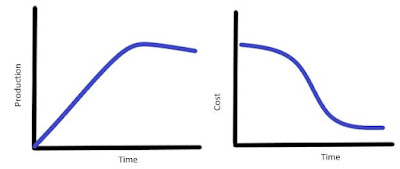Tools and Techniques of an Industrial/Apparel Engineer:
Tools :
The most common tools used by a garment engineer are stop watches and calculators.
Techniques :
(i) Methodology Analysis
The method used to determine the best way of working is the study method. A garment engineer studies not only the way the operator conducts work, but also the machines used, the layout of workstations, and the work materials used. The whole purpose of a method analysis is to find a better way to do a job.
Some of the more common ways to perform a method analysis are as follows:
(a) Observation – See Method Repeatedly.
(b) Hand Chart – Describe the simultaneous movements of left and right hands.
(c) Principle of economy of motion – Compare the speed used with a proven Economic Speed Checklist
(d) Slow Motion Analysis – Use motion pictures or video tapes to slow down activities for better observation.
One of the most important characteristics of an effective garment supervisor is the ability to identify good and bad practices among operators and make corrections if necessary.
(ii) Time study
This is the most common technique used by an engineer to determine targets. It helps in setting and developing standards in terms of time allowed to produce a certain number of units in a typical working day.
(iii) Capacity study and energy analysis
A power study is similar to a time study but here it is done to find the operator level of performance. This can be combined with an energy analysis, to determine the potential we are wasting, not only with an operator, but also with a line, batch or factory.
(iv) Follow-up study
A follow-up study is a means of measuring exactly what is happening in terms of the performance of an individual operator or group of operators. During the follow-up study, the engineer records the operator's performance and measures any delays that impede performance.
(v) Determination of bundles
It is a tool to determine specific areas where operators are weak or strong, to focus training efforts on those specific areas where he is not at the required level. It measures the operator's performance at each stage during performance.
(vi) Incentive Scheme
Developing a fair incentive plan for operators is a fundamental task of an apparel engineer. The most common form is a straight piecework system, where the operator's pay is based entirely on what the operator produces. However, there are cases where such a plan may not be fair to the operator.
For example, the utility operator's performance in each operation will not be high due to frequent changes. For this reason, different types of split stimulus plans can be used. Most operators can master the simple mathematical processes of applying any wage incentive formula.
(vii) Drill training
Many companies place their operator training programs under the engineering function, especially when some drill training is used. It is a system in which the specific tasks taught are analyzed and divided into tasks. The operator learns one part of the job at a time, and this enables him to learn faster than if he tried to learn the whole job at once. It is basically based on learning the various skills required to perform a complete operation.
(viii) Statistical quality control
SQC is a means of sample inspection designed to measure and control quality without inspecting each unit produced.
(ix) Scheduling system
Engineers are becoming more involved in developing systematic methods of production scheduling and work process control.














0 Comments